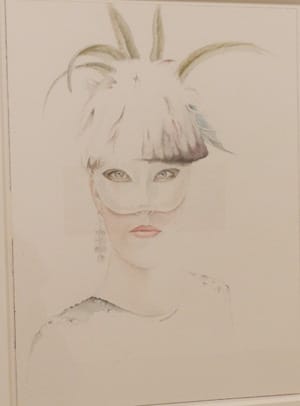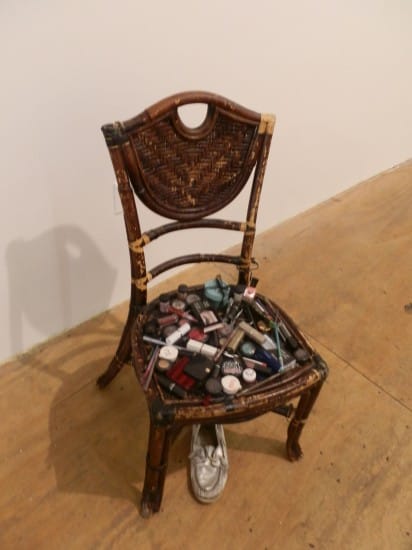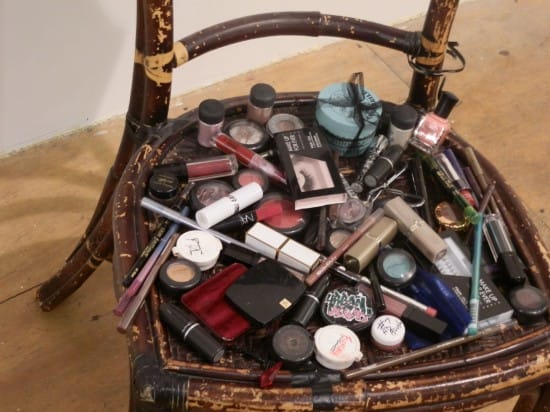If Gender Is a Performance, Can't Artistic Importance Be Too?
Attending transgender singer, songwriter and performance artist Mx Justin Vivian Bond's exhibition, The Fall of the House of Whimsy at Participant Inc., I left feeling horribly conflicted, so conflicted that it took me a few weeks to even approach the topic in writing. Even though I originally felt

Attending transgender singer, songwriter and performance artist Mx Justin Vivian Bond’s exhibition, The Fall of the House of Whimsy at Participant Inc., I left feeling horribly conflicted, so conflicted that it took me a few weeks to even approach the topic in writing. Even though I originally felt irritated by Bond’s self-mythologizing tenancy, I began to later wonder if Bond’s self-creation as an artistic icon is any different from any other art exhibition.
Bond is best known as a cabaret singer, songwriter and performer with popular characters such as Kiki DuRane from the lounge duo Kiki and Herb. In addition to cabaret, Bond is a queer activist and Radical Faerie.
Identifying as trans, Bond uses the pronoun v, which is outside the normal gender categories. As you’ll see in the rest of the article, v, as a pronoun, provides the answer to the linguistic question surrounding transgender people and allows for a self-invention much like in the exhibition.
Recently, Bond has risen to the spotlight with v’s memoir Tango, a captivating, humorous and moving look into the struggles of a transgender child. Lately, I feel like Bond has been everywhere. From Brooklyn hipster gay parties to Performa 11 and even the transgender protest that occurred at Zuccotti Park while it was still occupied, v has been reading sections from Tango like there is no tomorrow.
Consisting of objects ranging from drawings to photographs to furniture covered in makeup to a piano that all came from Bond’s East Village loft that is going to be torn down, The Fall of the House of Whimsy constructed Bond and Bond’s loft as an almost Warhol Factory-esque artistic salon.
As Participant Inc.’s press release explains:
The scripted environment of the exhibition is mirrored in Bond’s photographs of the former life, providing glimpses of life in this House of Whimsy. Unlike Bond’s solitary childhood imaginings of it, this now placeless dream house is populated by whimsical/subversive figures, rendered in Bond’s portraits.

The premise of the exhibition seems to be to prove the revolutionary power of the people and actions in Bond’s loft and to make all the visitors who have not been there feel a little lame.
By placing furniture and pretty much anything that was in v’s apartment into a gallery space, v’s surroundings have been confirmed as belonging to fine art. Looking at v’s bookshelf, which of course has a copy of Tango on it, I was wondering why I was supposed to consider this important or even worth regarding.

While still a piece of furniture from v’s loft, “Glamour Chair” (2011), covered in makeup, was a work that contained the sense of play and humor that I was looking for in a Justin Vivian Bond exhibition rather than self-aggrandizement.
The chair reminded me of a part of Bond’s memoir Tango about reinvention and Bond’s admiration and use of v’s mom’s iced watermelon lipstick.
As Bond writes:
Knowing that my lipstick was in place, I could safely face the world, having enhanced my beauty with a color that my mother, who was clearly a beautiful woman as well, had chosen. If given the chance, would I have chosen a different color, a hue more unique and self-revelatory?

After reading that passage from Bond’s autobiography after attending the exhibition, I finally accessed what I think was part of the point of Bond’s assertion of v’s own artistic importance. If Bond can exist as a trans-person with a unique pronoun and name that traverses the binary between man and woman, why can’t Bond, as an artist, create v’s own mythology?
Instead of choosing a lipstick color that is unique and self-revelatory, Bond has constructed a myth surrounding v’s loft as a radical performance space, whether or not it actually ever was.
And I’d like to ask, why not? In the end, how is this different from any other display of art? Isn’t the goal of any art exhibition a type of mythologizing about the figure of the artist and the utter importance of their work? Watching a performance artist construct their own identity, not just gender identity, in a pretty blatant way may point out certain truths about the easy adaptability of the art scene itself.
If this is getting too philosophical, lets bring it back to Bond’s real strength: singing and performance. On a TV placed on the floor of the exhibition space, Bond plays a video in collaboration with IOULEX of v’s song “American Wedding,” which is on v’s album DENDROPHILE.
The video is everything Bond’s exhibition should be: singing, glamour, suddenly shocking lyrics and dare I admit, whimsy.
Now I fell like I should try to reinvent my apartment as a place of radical creativity. Which name is best: The House of Frivolity, The Studio of Silliness or The Den of Genius?
Mx Justin Vivian Bond’s The Fall of the House of Whimsy will be on view at Participant Inc. (253 E Houston Street, Lower East Side, Manhattan) until December 18.




